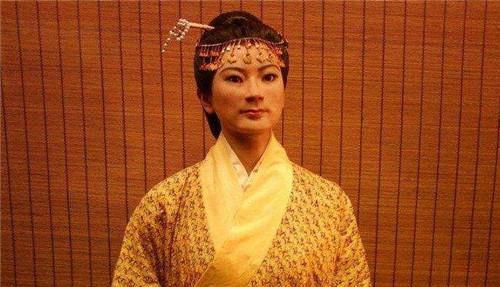Japan repeatedly asked for her hair, from a few to 1 silk, and China found an anomaly: half a hair could not be done
The origins of Japan and China began to take shape from the Tang Dynasty. Many foreigners come to China to study. However, in World War II, China expelled the Japanese invaders, and Sino-Japanese relations were also very difficult. At present, China has established friendly diplomatic relations with Japan and made common progress. More than 40 years ago, Japan made great progress. Before that, Japan asked our country for her hair many times. From a few to one, we found something unusual: so half a root wouldn't be given either.

There are many cultural relics in the Mawangdui Han Tomb in Changsha. Mrs. Xin Chai's coffin was found here. The world's lightest plain gauze shirt came out and caused a sensation all over the world. This is the hair of Mrs. Xin Chai excavated from the Mawangdui Han Tomb in Changsha in 1972.
After opening the coffin, the expert found that Mrs. Xin Chai was wearing 20 layers of silk clothes and lying in a red solution. When the specialist carefully stripped off her single garment, her whole body was exposed to the specialist and her pores were clearly visible. She seemed to have just fallen asleep.
Mrs. Xin Chai's body has been preserved for more than 2,000 years. This is a miracle in the history of world embalming. This is also due to the sealed, deeply buried low temperature, hypoxia, sterile natural environment, and more than 80 liters of coffin fluid with anti-enzymatic effect in the coffin. Mrs. Xin Chai's beautiful long hair is particularly eye-catching.
Who is Mrs. Xin Chai? She was born in 217 BC and was the wife of Li Cang, the prime minister of Changsha. In his youth, Li fought alongside his great father Liu Bang of the Han Dynasty and later served in Changsha. Xin Chai is the daughter of Xin Yi, who lives in Changsha, Hunan. Li Cang came here with his wife and child who had just turned one year old.
Li Cang soon encountered a rebellion by the neighboring King Yingbu of Huainan. Yingbu was the brother-in-law of Wu Chen, the second generation of the King of Changsha. Li Cang urged Wu Chen to kill Yingbu. As a result, Wu Sun's sons Wu Qian and Li Cang were crowned, and Li Cang became the first generation of successors. However, when Xin Chai was less than 30 years old, Li Cang died, and his son succeeded his father.
Watched as husbands and sons died one after another. His son died around the age of 30. In the fifteenth year of Emperor Wen of Han, he himself died. More than 2,000 years later, Mrs. Xin Chai's body became the world's first wet corpse with a long history. Later, similar ancient corpses were classified by archaeologists as "Mawangdui corpses".
Japan had just seen that Mrs. Xin Chai's hair had been maintained for thousands of years, so it asked China to provide some, even a little, hair. It wants to do scientific research. After being rejected by China, Japan also offered a free donation. This has also aroused china's vigilance, saying that half of it is impossible to do. The United States also wants to get Mrs. Xin Chai's hair from China. The conditions given were better than Japan's, but they were still rejected by China.